“We’ve got some strong boys to make it through everything they did, and I’m so grateful to be able to hold them in my arms today,” says their mother, Jessica Proudfoot, as she reflects on the journey her twins went through even before they were born. That’s because at 20 weeks gestation, the twins were diagnosed with a rare condition called twin-to-twin transfusion syndrome (TTTS).
“Whatever I have to do to save them is what I’m doing – that was my first thought after getting the diagnosis,” says Jessica of Canal Fulton, Ohio.
During her routine pregnancy checkups, doctors discovered Jessica was carrying monochorionic twins, which are identical twins that share one placenta. About 10% to 15% of these cases will go on to develop TTTS.
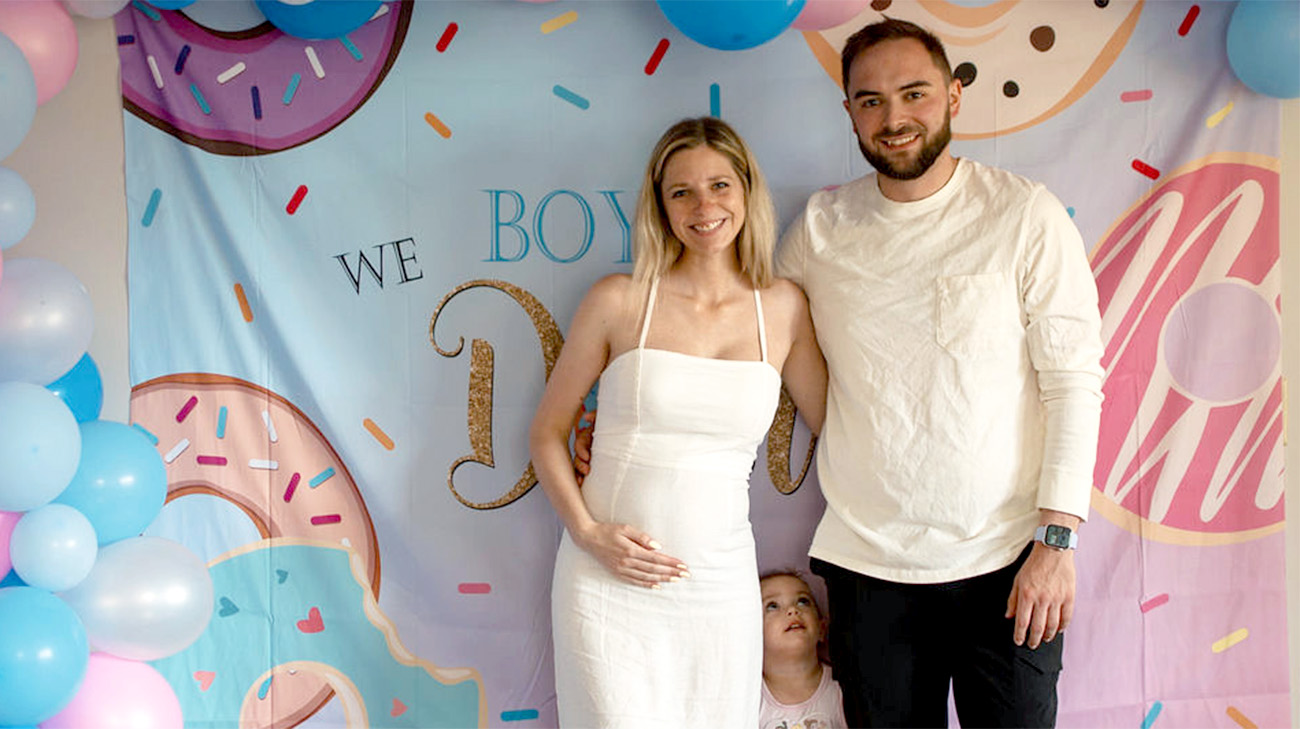
Jessica and her partner, Andrew, were pleasantly surprised when they found out they were having twins. (Courtesy: Jessica Proudfoot)
“I wasn’t too worried about twin-to-twin transfusion syndrome even being a possibility because the chances of that occurring were just so small. But we ended up having that small chance happen,” says Jessica.
While most identical twins share blood and nutrients from the same placenta equally, twins affected by TTTS do not. Instead, one twin (the donor twin) receives less blood supply than the other twin (the recipient twin). The imbalance deprives one of the nutrients it needs while providing an excess of nutrients to the other.
“The twin that gives blood to the other ends up having low blood volume, which reduces their kidney function and urine production. On the other hand, the recipient twin is generally larger with volume overload, placing the heart under significant pressure, which can lead to cardiac dysfunction. If left untreated in severe, early-onset cases, twin-to-twin transfusion syndrome is associated with high mortality,” says Courtney Stephenson, DO, a maternal-fetal medicine specialist and the Director of Fetoscopic Intervention at Cleveland Clinic Children's Fetal Care Center.
There are five stages of TTTS, and Jessica was diagnosed at stage 2 with fetal growth restriction, which is when the donor twin’s bladder isn’t visible on ultrasound – typically meaning the donor twin has stopped making urine. Because of her TTTS stage and gestational age, Dr. Stephenson offered a surgery called fetoscopic laser ablation.
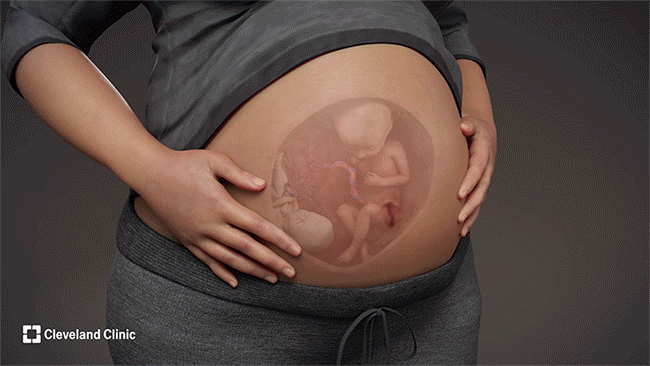
During fetoscopic laser ablation, a surgeon identifies abnormal blood vessels on the surface of the placenta and uses a laser to close off those vessels that are causing one twin to get too much blood and the other to receive too little. (Courtesy: Cleveland Clinic)
“The fetoscopic procedure is an option for stage 2 twin-to-twin transfusion or higher, and the patient must be between 16 to 26 weeks gestation,” says Dr. Stephenson.
Fetoscopic laser ablation is a procedure where the surgeon inserts a small camera into the uterus to identify and map out any abnormal blood vessels on the surface of the placenta. The surgeon then uses a laser to close off those blood vessels that are causing one twin to get too much blood and the other to receive too little. The goal of the surgery is to separate the shared circulation, allowing each twin to have its own blood supply.
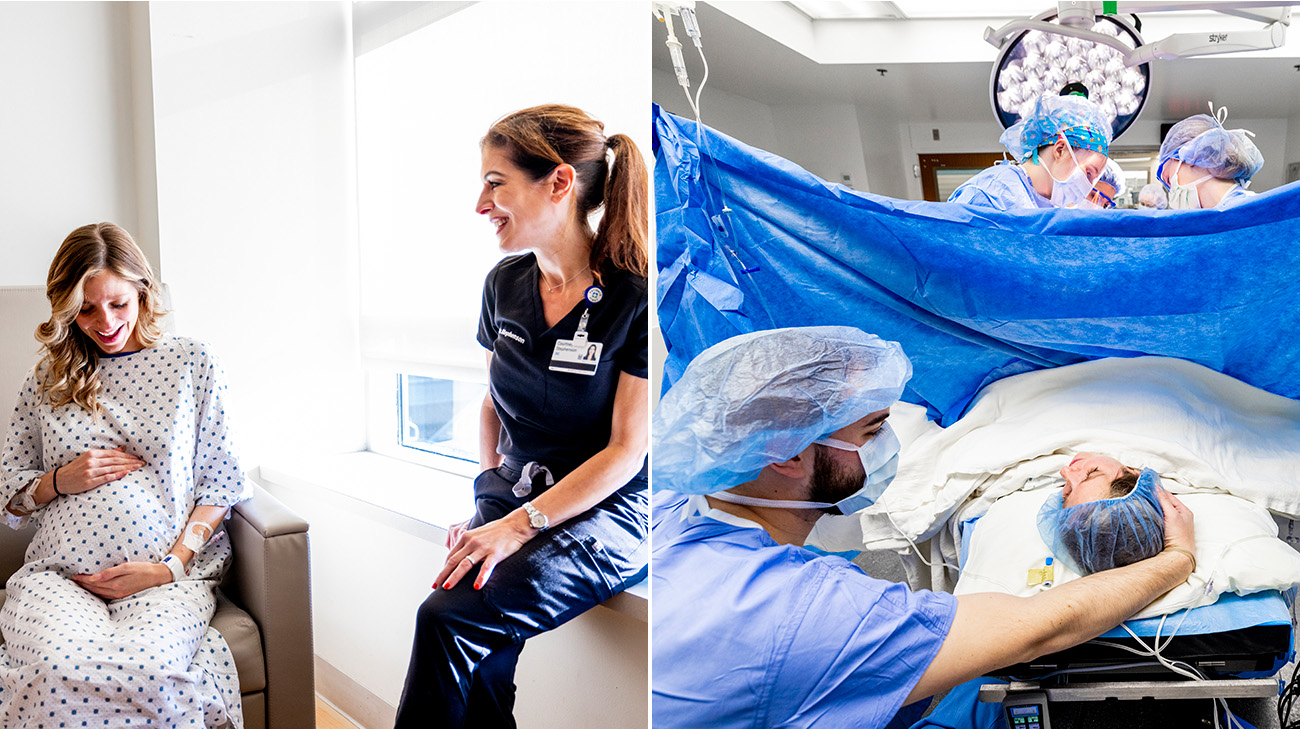
Dr. Courtney Stephenson was by Jessica’s side during the delivery as well as Andrew. (Courtesy: Cleveland Clinic)
“It was scary leading up to the surgery, and we prayed a lot. But I put my faith in Dr. Stephenson and this procedure,” says Jessica.
The laser ablation was a success, and the twins started making progress shortly after. Their blood volumes and fluid levels were evening out sooner than expected. Jessica’s care team continued to watch her closely, and after several weeks into the third trimester, they noticed the twins’ legs were in the same sac. This meant the umbilical cords could get tangled. After this discovery, she was admitted to the hospital for monitoring until the babies were able to be delivered by C-section at 31 weeks and six days gestation.
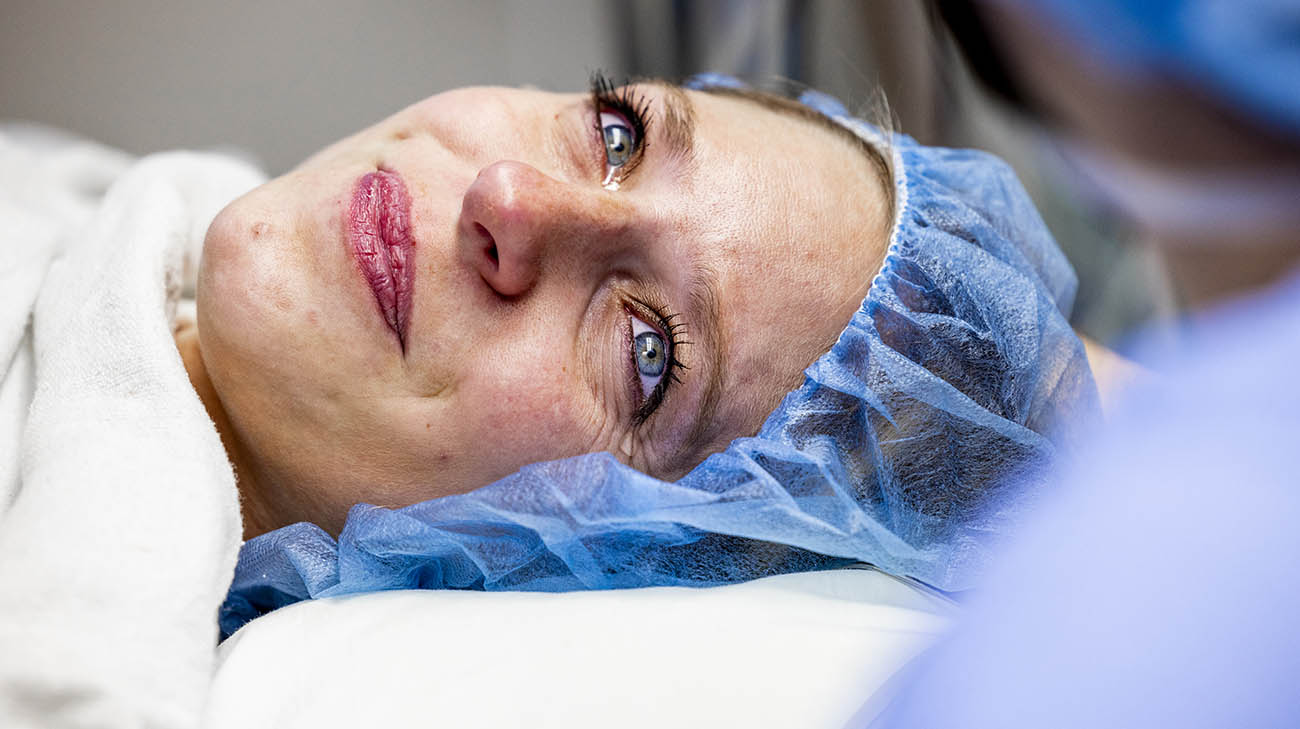
Jessica delivered the twins at 31 weeks and six days gestation. (Courtesy: Cleveland Clinic)
“The twins were delivered at the same time. They have the exact same birthday down to the second,” says Dr. Stephenson, who was able to be there for Jessica’s delivery.
“We were so relieved to hear them both crying. I was just thinking those are my boys and thank God they’re OK,” says Jessica. She named the twins Graylen and Chaysen with her partner and the boys’ father, Andrew Cross.
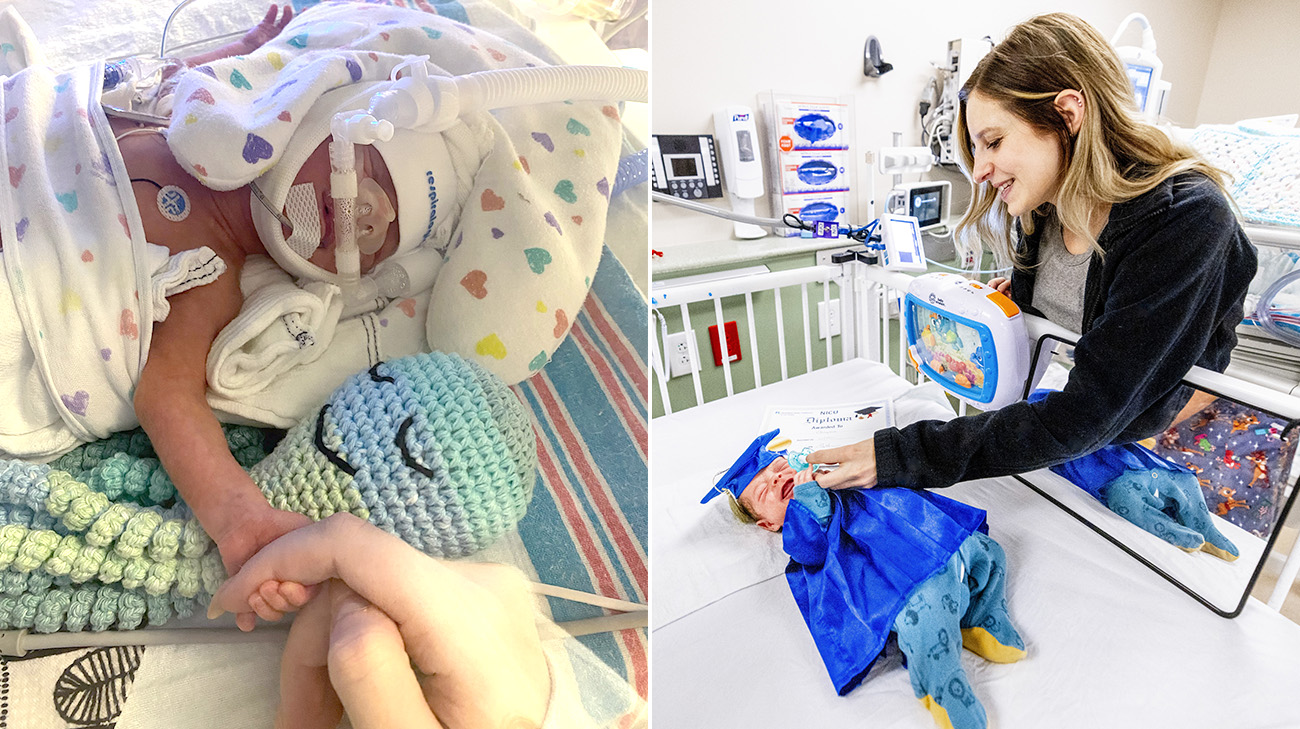
The twins spent some time in the NICU after birth to build up their strength. (left) (Courtesy: Jessica Proudfoot). When it was time to go home, the twins celebrated their graduation from the NICU in style. (right) (Courtesy: Cleveland Clinic)
Since the twins had to be delivered prematurely, they needed to be cared for in the neonatal intensive care unit (NICU) as they continued growing. Jessica would visit them at Cleveland Clinic Fairview Hospital every day, but during the hours she couldn't be there, she knew they were in good hands.
“The NICU team was amazing. It was really nice to have a group of nurses who not only comforted me but were there for the boys day and night. They knew them front to back and could not have been in better hands,” says Jessica.
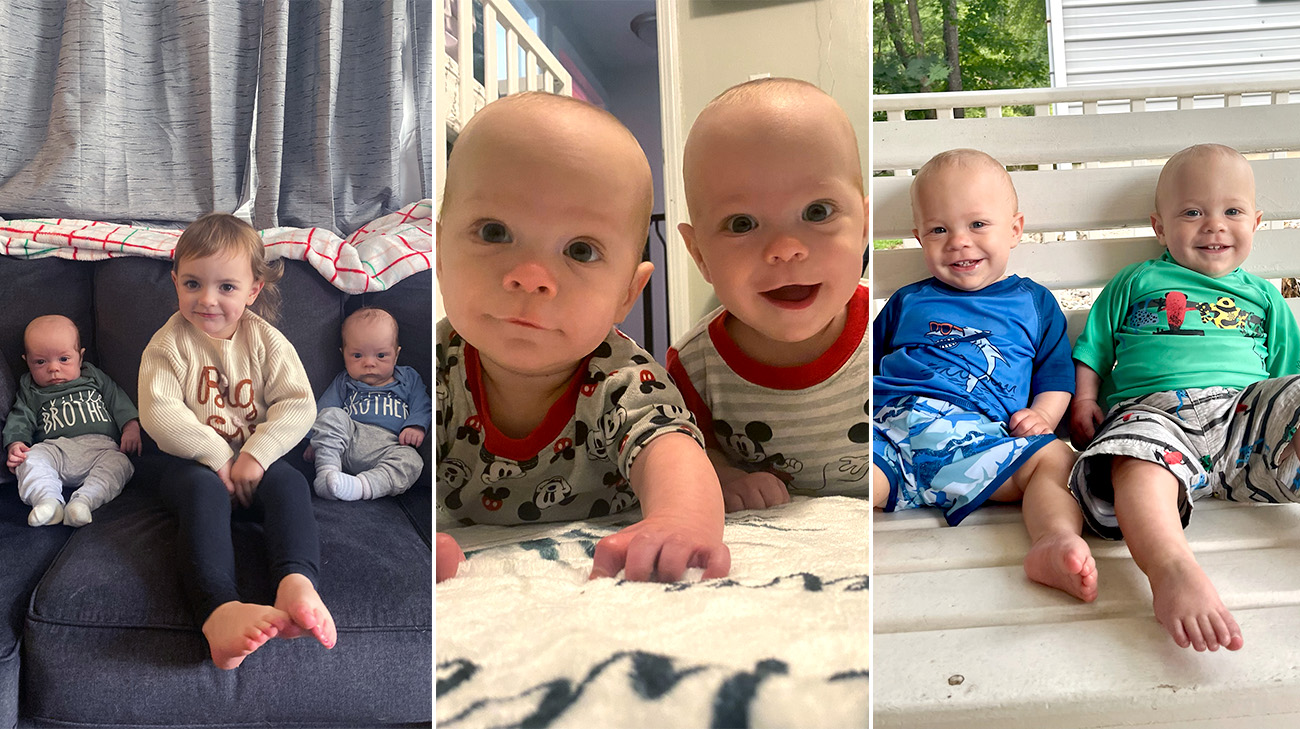
The twins are thriving at home and enjoy playing with their big sister, Elliana. (Courtesy: Jessica Proudfoot)
Graylen and Chaysen were in the NICU for nearly three months until they were able to come home and be with Jessica, Andrew and their big sister, Elliana. As the twins continue reaching new milestones, Jessica says their personalities are starting to shine. Graylen loves being held and cuddled – while Chaysen is more independent and enjoys watching his sister play. Although it was a challenging journey to get them where they are today, Jessica says it was all worth it.
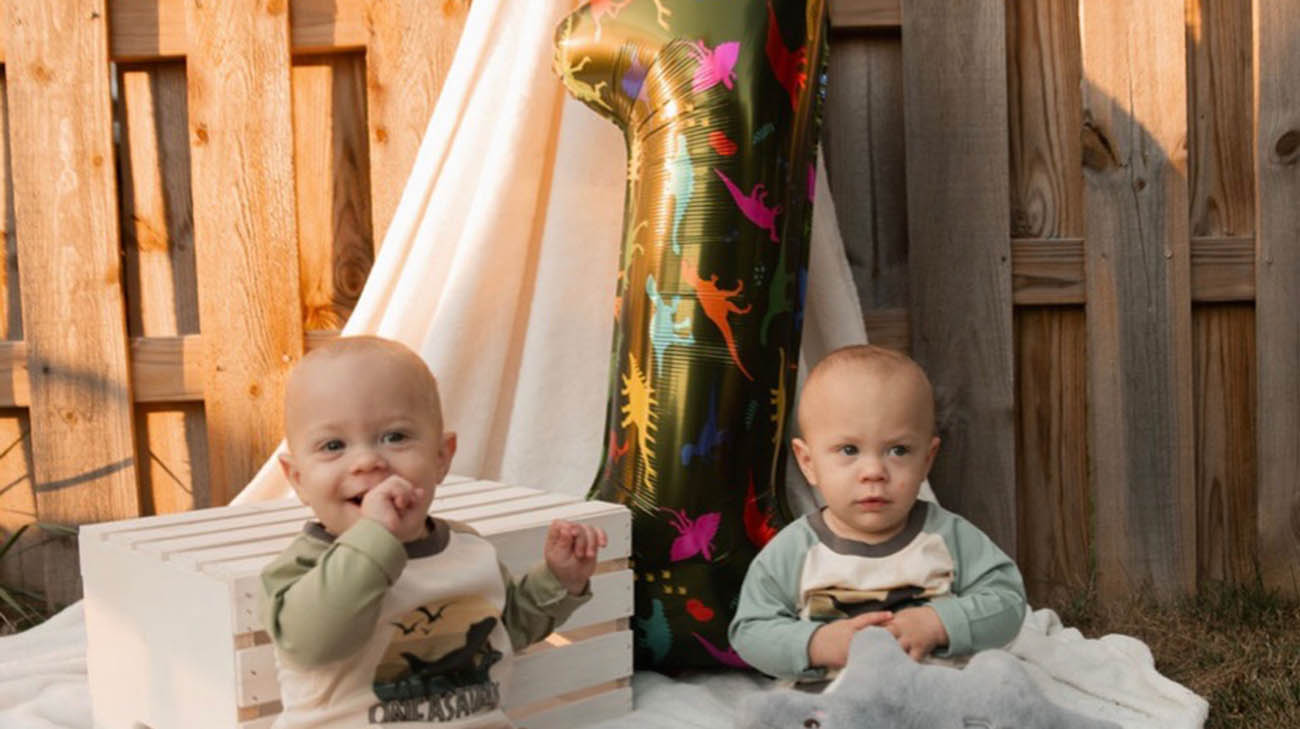
Graylen and Chaysen celebrated their dinosaur-themed first birthday with friends and family. (Courtesy: Jessica Proudfoot)
“When I was in the hospital, I had to be strong for them because I knew they were feeling everything I was. Dr. Stephenson and her team helped make us feel comfortable in a very uncomfortable situation,” says Jessica.
Dr. Stephenson adds, “Our job is not just to treat, but to care for and ensure both the mother and her baby or babies not only survive but thrive. These mothers are extraordinary and always amaze me with their strength and courage. They are heroes.”
Related Institutes: Ob/Gyn & Women's Health Institute, Cleveland Clinic Children's

